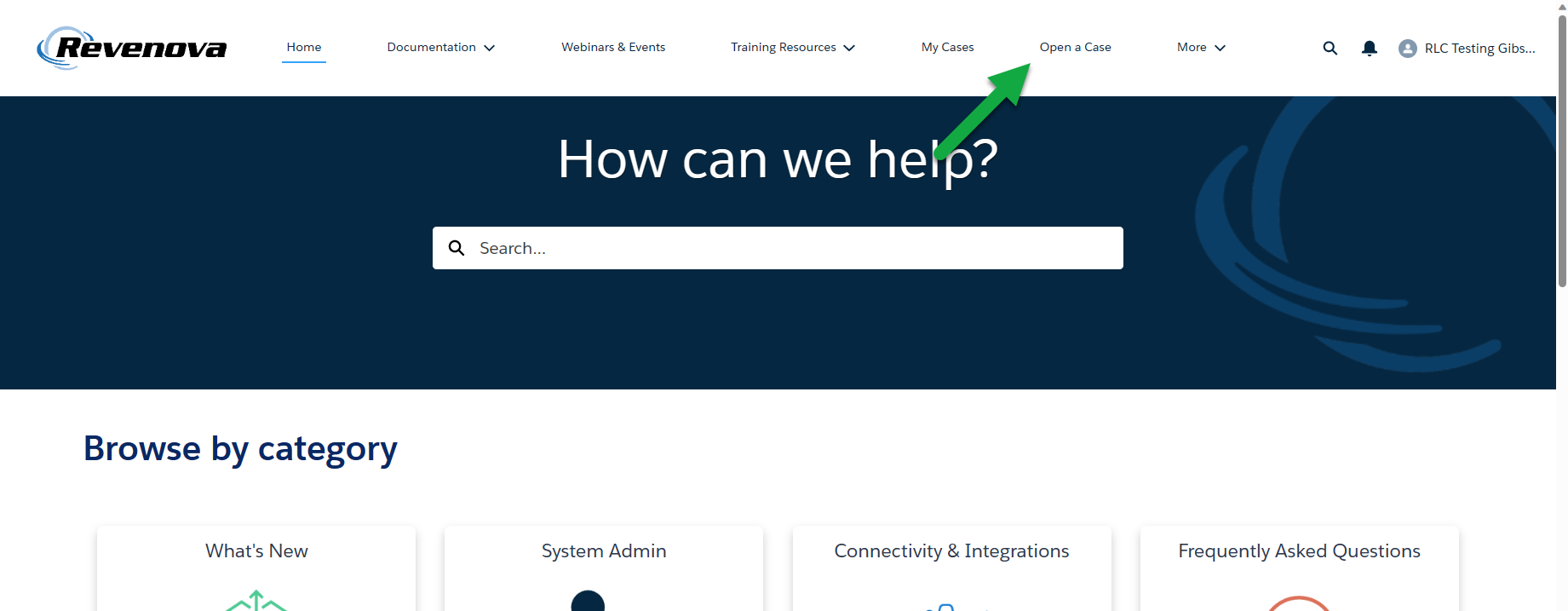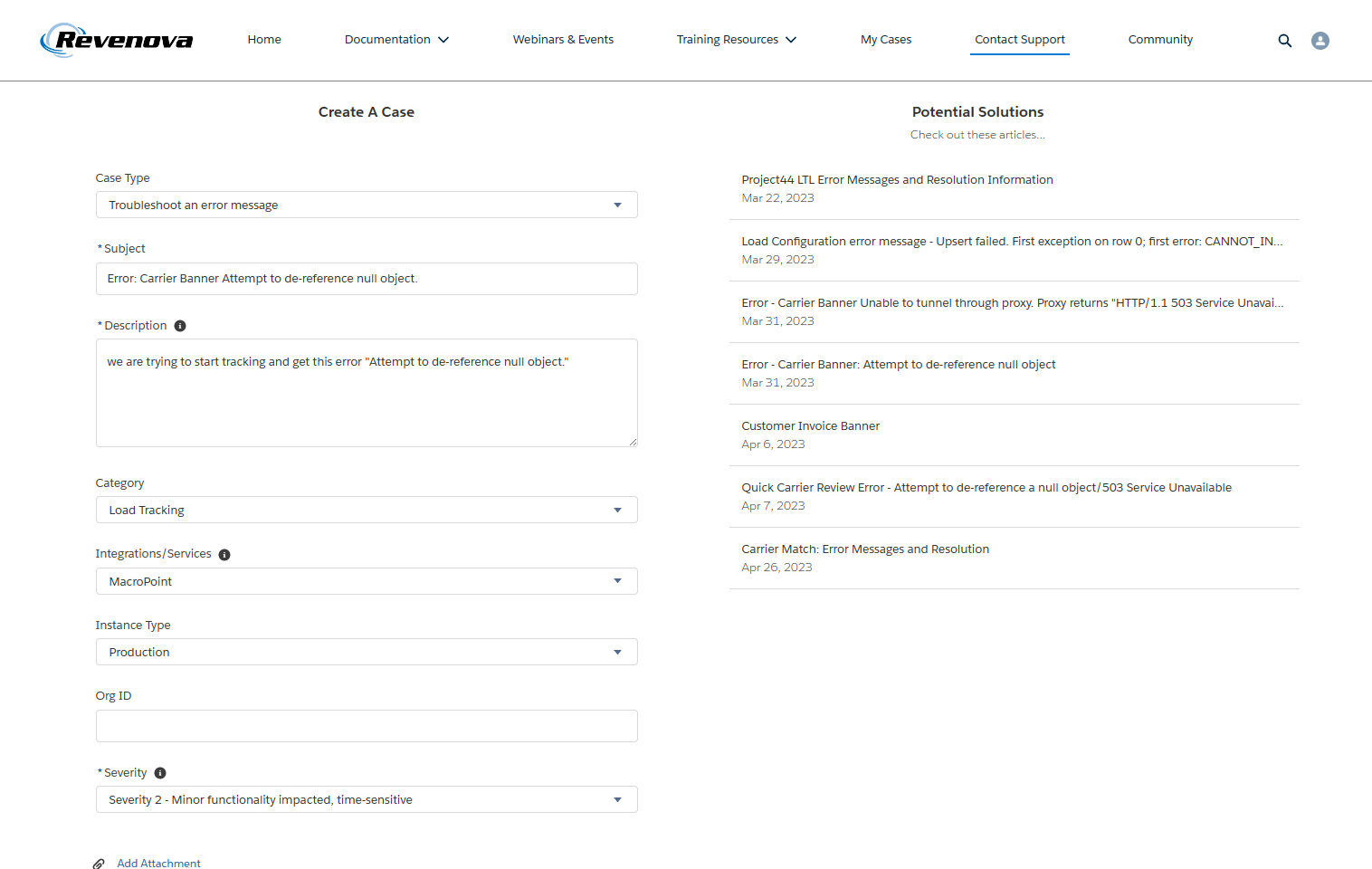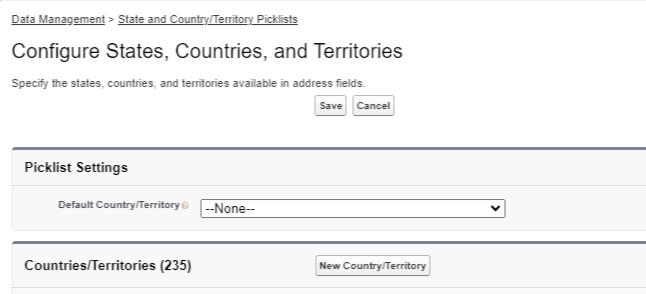Product Overview
Revenova TMS (TMS) is the leading multi-modal Transportation Management System on the Salesforce AppExchange. As a fully-native force.com managed package, it seamlessly connects to your CRM environment and takes advantage of all the capabilities inherent in the Salesforce platform. These include mobile support, point-and-click reports and dashboards, anytime/anywhere access, and industry-leading reliability, scalability, and security.
Document Purpose
The purpose of this document is:
To direct everyday TMS users to resources that aid in the performance of their tasks.
To provide managers/team leaders with links to important configuration documentation.
To provide Salesforce administrators resources for supporting the TMS.
Managed Package Installation
Please see the Revenova TMS Installation Guide for instructions to install the TMS into a Salesforce environment.
Salesforce Platform Help and Environment Configuration
Salesforce provides an extensive library of online text and video describing the capabilities of the Force.com platform and the CRM (and other) products it provides.
As a native Salesforce application, the TMS is completely seamless within your Salesforce environment. Please click on the Help links and icons present on every page of the application to access these resources. Most configuration activities that are Salesforce platform-related are described with online help and training videos.
Contact Salesforce Help with CRM and platform questions.
Get the most out of Salesforce by completing Trailheads.
Access the links on every page for the following platform-related activities.
Adding or modifying a user.
Deactivating a user.
Adding, modifying, or deleting a security profile.
Changing a page layout for a specific records type or object.
Adding, modifying, or deleting a tab-based list view.
Validation rules to ensure data integrity and TMS functionality.
Enable Lightning Web Security for custom components.
Create groups and add users to apply permissions as necessary.
Explore TMS Documentation
Learn more about how the TMS functions.
Much of the TMS functionality is conducted on custom Salesforce Lightning Web Components.
Connect to 3rd party integrations to send and receive data, track loads, and much more.
Customize and use the most important data with Field Sets.
System administrators configure how the TMS operates with TMS Admin and TMS Accounting Admin.
Learn how to set up, configure, and customize TMS Features.
Manage assets with the Fleet Management module.
Track invoices, payables, and payments with Accounting packages.
For How-To, Troubleshooting, Customer Requests, Webinars, and many other resources, see the Revenova Learning Center.
Critical Customer Responsibilities
Make sure you maintain your security profiles and sharing settings so that the appropriate capabilities and data are exposed to your various user groups.
See Salesforce documentation regarding Profiles and Permission Sets.
If you are using the Sales Tax object, ensure that the rates defined there are current and correct.
Salesforce requires that user email addresses are verified to enhance accountability and security when sending emails. Prior to the Salesforce Spring ‘25 release, a verification email was sent to each user once per release. When an org is updated to the Spring ‘25 release, a reminder email is no longer sent. See additional Salesforce information here.
Unverified email addresses are not able to deliver email messages.
Confirm an email address is verified by completing the following steps.
From the View Profile icon, select Settings.
Choose the Email section and select My Email Settings.
If a Resend Verification Email link is present next to the What email address would you like to use as your return address? setting, the email address is not verified.
If the Resend Verification Email link is not available, the user's email is verified.
This process is separate from the Verified setting next to the Email field on the User record.
Load Lifecycle Salesforce Path
The Load Status field value changes automatically as a load moves through its lifecycle as follows:
New load: Unassigned
Load with outstanding Carrier Quote Request(s): Quotes Requested
Load with carrier quote(s): Quotes Received
Load tendered to carrier: Tendered
Load with tender accepted by the carrier: Assigned
Load with tender declined by the carrier: Declined
Load with First Stop Carrier ETA Date populated: Dispatched
Load with First Stop Arrival (or) Departure Date populated: In Transit
Load with Last Stop Arrival (or) Departure Date populated: Delivered
This field can be set manually by the user if process automation is not used for a process step or steps.
Picklist values cannot be added or changed on the Load Status field. Do not change the field label or API name of the packaged picklist values.
This packaged field is used throughout the Revenova application and should not be changed. As a workaround, create a separate picklist field to denote additional load status and updates.
In order to install any TMS upgrade installation, the Load Status picklist field must not be added to or adjusted.

Multi-Currency Considerations
The TMS can be used in both single- and multi-currency environments.
When manually creating a record, the user is responsible for selecting the appropriate currency.
In multi-currency environments, the following currency code assignments occur for TMS auto-created records:
New Record Type | Scenario | Currency Source |
|---|---|---|
Account | Online Carrier Application | Default |
Account | New Load Customer/Shipper/Consignee | Default |
Account | Customer Portal New Load Customer/Shipper/Consignee | Default |
Fuel Index History | EIA API Integration | Parent Index |
Load | New Load Widget | Default Load Currency Setting |
Load | Load Clone | Cloned Load |
Load | Customer Portal | Default Load Currency Setting |
Load | Carrier Load for Freight Plan | Default Load Currency Setting |
Load Accessorial | Accessorial addition | Parent Load |
Line Item | New Load Creation/Modification | Parent Load |
Freight Plan | Freight Plan Creation | First Customer Load Added |
Freight Plan Load | Freight Plan Creation/Modification | Parent Load |
Customer Quote | DB Stored Rate Quote Auto-Creation | Rate Entry |
Customer Quote | Quote auto-creation on Customer Portal | Customer Account |
Customer Quote Accessorial | Quote auto-creation on Customer Portal | Parent Quote |
Customer Quote Tax | Tax Calculation | Parent Quote |
Customer Invoice | Invoice auto-creation | Customer Quote |
Customer Invoice Accessorial | Invoice auto-creation | Parent Invoice |
Customer Invoice Tax | Tax Calculation | Parent Invoice |
Carrier Quote | DB Stored Rate Quote Auto-Creation | Rate Entry |
Carrier Quote | Email Loop RFQ | Carrier Entered |
Carrier Quote | New quote record in Freight Quote Assistant | Carrier (Service) |
Carrier Quote Accessorial | Quote auto-creation or accessorial add | Parent Quote |
Rate Entry | Stored Rate creation for Customer Transportation Profile | Transportation Profile |
Stop | New Load Creation/Modification | Parent Load |
Transportation Profile | Batch Transportation Profile Creation | “Parent” Account |
Vendor Invoice | Auto-creation based on Carrier Quote | Carrier Quote |
Vendor Invoice Accessorial | Auto-creation based on Carrier Quote | Parent Invoice |
See the Salesforce documentation to edit dated exchange rates in the organization.
The Load object financial fields represent currency rollups from the child quote, invoice, and payment records. They are automatically converted to the load record’s currency based on the effective exchange rate for the load’s expected ship date. The Load Financial Summary is shown below as an example.
.png)
Geolocation Support
The TMS supports geolocation services based on the following:
The platform geolocation support for account shipping addresses auto-populate the ShippingLatitude and ShippingLongitude account fields.
Make sure to turn on this feature from Setup → Data Management → Data Integration Rules.
Populating the Stop object Geolocation field when a load is created with no-account stops.
Using account and stop geolocations when searching load/quote history on the Freight Quote Assistant.
Populating Miles Away and Kilometers Away on stops for an in-transit load.
Populating stop and driver locations on route maps.
Geolocation-based truck posting search.
Geolocation-based delivering load search.
State and Country Picklist Support
The TMS supports Salesforce environment with or without State and Country Picklists enabled. State and Country Picklists provide an error-proof mechanism for entering world-wide address information. Please see the Salesforce online help for more information on this capability.
It is strongly recommended to add a Default Country/Territory for the org. Selecting a default country/territory helps to prevent state/province mismatches when receiving information from 3rd party vendors.
The state/province and countries added to the fields above may be made available across the TMS. To add them as selections, add the countries and/or states/provinces to the two global picklists:
Countries
States
This capability extends only to “native” Salesforce lead, account, and contact address fields. The following objects/fields do not inherit the Salesforce State and Country picklists. It is possible to add state/province and country picklist values directly to the following TMS fields, as desired:
Object | Field | Purpose |
|---|---|---|
Carrier Liability Limit | Country | Defines country where limit applies. |
Customs Broker | Origin Country | Define load origin countries handled by customs broker. |
Customs Broker | Destination Country | Define load destination countries handled by customs broker. |
Lane | Origin Country | Lane definition origin country. |
Lane | Origin State/Province | Lane definition origin state/province. |
Lane | Destination Country | Lane definition destination country. |
Lane | Destination State/Province | Lane definition destination state/province. |
Sales Tax | Origin Country | Origin country for taxation purposes. |
Sales Tax | Origin State/Province | Origin state/province for taxation purposes. |
Sales Tax | Destination Country | Destination country for taxation purposes. |
Sales Tax | Destination State/Province | Destination state/province for taxation purposes. |
Stop | State/Province | No-account stop location information. |
Stop | Country | No-account stop location information. |
Zone | State/Province | Zone definition location information. |
Zone | Country | Zone definition location information. |
Create a Revenova Support Case
In the Revenova Learning Center, open a support case, check it’s status, and respond to cases. Check the current status of Salesforce here. Any instances impacting the performance of the Salesforce platform are recorded here.
Sign in to the Revenova Learning Center.
Only Revenova customers with Admin login credentials to the Revenova Learning Center may create and manage cases.

Click the Open a Case tab.
Choose the Case Type.
For Subject, enter a title for the issue.
In the Description section, follow the prompts to describe the case:
Details about the issue or question.
Error messages that were received.
Troubleshooting steps that were followed.
Choose a Category and Integrations/Services (optional).
Choose the Instance Type where the issue was experienced or request an upgrade (optional).
When selecting Sandbox, please provide the Org Id.
Choose a Severity level (see below).
Attach files to add any relevant files to the case, such as error logs or screenshots.
Review the case details and click Submit. The Case Number and summary appear.

Describe the Case
Provide as much description as possible. Include relevant resource information, along with any other context that might help us understand the issue. For example, to troubleshoot an error message, include the error message in text format, a screenshot, user(s) experiencing the error, and the Load number where the error is encountered.
When as much detail as possible is provided, the chances that the case can be resolved quickly is increased.
Choose a Severity
It is highly recommended to choose the highest severities only for cases that can't be worked around or that directly impact production applications.
The following table lists the severity levels and example problems.
Severity | Description and example |
|---|---|
Severity 4 | A general inquiry, how-to, routine technical issue, or to request an upgrade or feature. |
Severity 3 | Non-critical functions of Revenova or the Salesforce platform are behaving abnormally, but the issue is not time-sensitive. |
Severity 2 | Important functions of Revenova or the Salesforce platform are impaired or degraded. |
Severity 1 | Business is significantly impacted. Critical functions of Revenova or the Salesforce platform aren't available. |
Create a Customer Request (CR)
Create a new CR
Sign in to the Revenova Learning Center.
Click the My Current Customer Requests tab.
Click the New Request button at the top of the list. Enter the CR information into the modal.
Review Existing CRs and Reprioritize
Sign in to the Revenova Learning Center.
Click the My Current Customer Requests tab.
Drag and drop the CR/row in the list to reprioritize as desired.
Make edits and click the CR hyperlink. The CR detail record page is where edits may be made.


